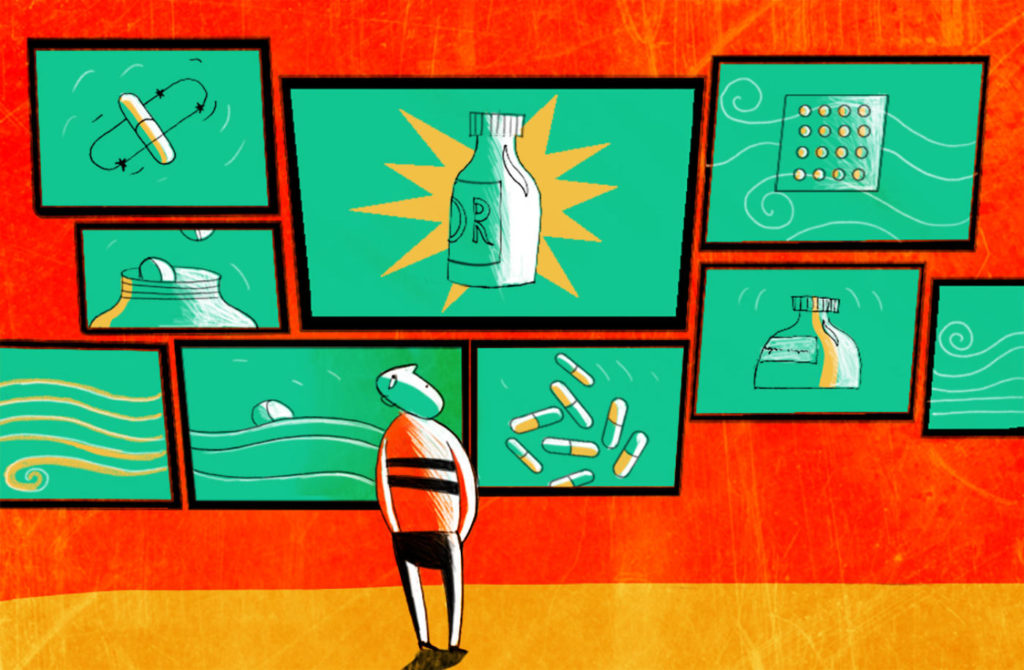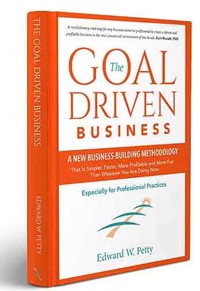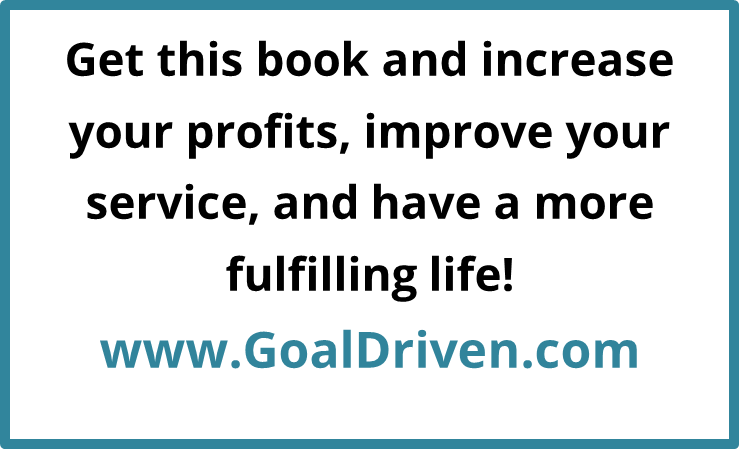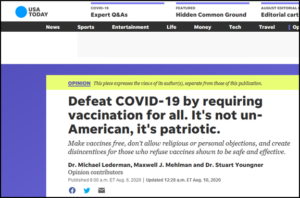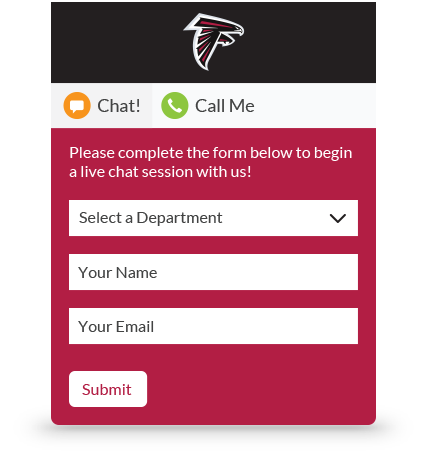
(Download a PDF of this article)
3 Echelons of Practice Marketing: Motivation, Management, Procedures
Most attention is usually put on marketing procedures. That is fine but when marketing fails, it is usually because the procedures just didn’t get done, or only half done. And this is because no one was put in charge of them and given the time to execute them. Pretty obvious, but easily overlooked. This was the essential theme of the Marketing Manager System I published in 2000. It is out of print now but much of the info is on our PM&A Member’s site.
And underneath it all is motivation. Who really wants to do the marketing? You may get excited from a seminar or about an event you have planned. But motivation can dissipate quickly and too often we are not active enough in keeping ourselves and our teams passionate and determined about providing more and better service.
So all three levels or echelons of marketing need to be in place. What follows is a brief list to help you set up effective marketing activities for the next 4 months.
QUALITY SERVICE AND CARE COMES FIRST
It goes without saying but it needs to be said – from an executive point of view, quality care and service comes first. Ultimately, an office that gives “WOW” service and produces extra-ordinary outcomes generates enough word of mouth to create a waiting list practice. Think of Clarence Gonstead.
MOTIVATION
Plan weekly motivational talks at your team meetings and major motivational activities each month. These can be discussing case successes, watching Doctored, or doing a free clinic for the underprivileged. Keep the saw sharpened. Keep reminded of WHY you all are doing what you are doing and your greater purposes. This is the fire that drives the engine of your practice.
MARKETING MANAGEMENT
Someone to Coordinate
Delegate someone to be the marketing coordinator. You could have someone for just internal and someone for external events. These roles are only a few hours per week as coordination jobs. The actual work is delegated as separate duties so that everyone on your team has a role in marketing. Your entire office is the marketing department but it helps to have duties assigned just like you do for the front desk or billing dept.
So Many Procedures, Which Should You Pick?
Select the marketing activities that have worked for you in the past and add a few at a time. Pilot each and see what works better for you. Marketing is all about testing. Find out what works and then put it in a system. Keep it simple. Get your marketing systematized and departmentalized and delegated.
Time to Plan
Part of marketing management is setting aside time to plan and coordinate upcoming events. At least monthly, schedule time aside to review past promotions and plan new marketing for the next few months.
Calendar
Make sure you have a large calendar to post all of your upcoming promotions.
MARKETING PROCEDURES
COMMUNICATION CHANNELS
All your marketing does no good unless it is communicated. Marketing IS communication, so keep the communication going – in and out of the office. Make sure each month you promote via team members, “table talk”, e-newsletters, posters, Facebook, etc.
Recurring Procedures
The most important marketing activities are your usual, recurring procedures that you do on a daily and weekly basis. Many of these are already embedded in your routine procedures. Because they are done routinely, the usual and everyday procedures can be overlooked or not given the importance needed. For example, just answering the phone can make a big difference. Don’t let the routine become the mundane. Practice new ways to have fun with your recurring procedures.
Community Services
This is what I call the free or discounted services you provide in your community. Health screenings, workshops, networking events, setting up alliances with dentists, for example, or just conspicuously showing up at the Lions Club breakfast. I would delegate this to one person and give them 4-6 hours per week to schedule events and to help coordinate who attends these events. There is a good deal of administration in this role. I have seen events scheduled a year in advance that generated new patients and referrals from alliances that come in years after they were initially set up because the relationship was well maintained.
- External Workshops and “Lunch and Learns.” Schedule external classes for January and February now. Business “Wellness Programs” or lunch and learns at the local YMCA or Senior center. Include massage to make it even more attractive.
- Local Health Fairs. Contact all the locations you have held events in the past year and schedule events for the New Year.
- Contact local businesses for health fairs in the New Year and get them scheduled.
Internal Workshops.
Internally, you can also schedule special classes over the next 4 months, including “Natural Approaches to Flu Prevention”, “New Healthy Ways to Lose Weight and Get Fit This Winter,” etc.
Google Reviews
If you get 4-5 star reviews on Google, you will get new patients. This is proven. It is true. Assign it to someone and do it. Now. It may take a few months, but if you do it, they will come.
Patient Education: Table Talk and the New Patient Care Class
In my opinion, educating your patients is more important than adjusting or treating them. Not all patients are easy to educate, but all can be gradually persuaded to understand the value of your services: what they do, how they work, and why they are important. Educated patients refer more. They stay with you longer. They are more enjoyable to care for. And, most importantly they are healthier. Table talk is an excellent practice with each patient. But your new patient care class is a proven winner. It just takes your intention to do it. Two times per month. Do with the fervor of a Sunday sermon or with the frankness of a fireside chat with old friends. It will boost your practice and you. And… how much does it cost? That’s right… nothing.
Care to Share
There are many ways to do this program but I like it because it encourages your patients to help you get the word out about their successes so that others do not have to suffer as long as they did. It gets them to help their community. It taps into their greater purposes and gives them an opportunity to help others. Set up a monthly drawing and give away a modest prize or two. Enter the drawing by submitting a Google review, by bringing someone into the office for a no charge consultation, or by getting a workshop set up in their place of employment. Run the program monthly or every other month.
Special Promotions
These are the big events that can be fun and energizing which you hold in your office every couple of months or so. I list some ideas below.
OCTOBER
October is National Chiropractic Health Month. (The International Chiropractic Association and the American Chiropractic Association once recognized October as Spinal Health Month, but now it is simply called Chiropractic Health Month.) This can give you a reason to do many different promotions. For example:
- A banner in your office for patients to bring in family members for a free “Check-up.”
- Reactivation Month – send postcards to all inactive patients who have not been in for at least one year or more for free spinal checkup: “Chiropractic Check-up Time.” Use an image of an alarm clock.
- The ACA has other suggestions on its site. (http://www.acatoday.org)
Child Health Day
Under a Joint Resolution of Congress, the President of the United States has proclaimed National Child Health Day every year since 1928. It was originally celebrated on May Day, May 1, each year until 1960, when the date was moved to the first Monday in October. Use this as a great opportunity to have a Kid’s Day. (Google it. Many differen sites offer suggestins.)
National School Lunch Week
National School Lunch Week takes place on the second Sunday in October (http://www.nea.org/tools/lessons/48412.htm ) You could have a workshop on fast and nutritious meals for kids targeting parents and moms.
Awareness Weeks
If workshops aren’t your thing, then set aside one week to focus on a particular condition, such as headaches and call it “Headache Awareness Week”, or “Pinched Nerve Awareness Week”, “Neuropathy Awareness Week”, etc. Schedule one a month where possible for the next 5 months as part of your Community Education Program. Detail procedure with posters in your Marketing Manager System Toolkit and on your PMA Members site under: “Community Education.” Offer free consultation, screening, and information regarding the condition.
Crazee Dayz
Select a day and make it special for your patients. Only one day a week is necessary otherwise it’s not special. It can be once per month or every week. Serve extra treats. You can have the staff dress out of uniform coordinated to the day. This can add some extra fun to the office and help with retention and long term referrals.
- Muffin Mondays – Serve up a selection of health bran, blueberry, or gluten free muffins.
- Two for Tuesday – Bring a friend for a complimentary spinal exam and offer the patient a free adjustment. “Two Fer Tuesday.”
- Whacky Wednesdays – gag gifts for patients, “adjust-a-mints”, etc. (http://www.bannermints.com/)
- Thirsty Thursdays — Organic apple juice served in plastic wine glasses with a sliced green apple on the rim. NA margaritas.
- Fruity Fridays – Bowl of local fruit.
Chiropractic Opportunity Week (“The doctor is having a COW.”) (patient referrals and advertising new patients) Free consultation, exam, and x-ray if needed.
Hair Dresser/Beauty Salons/Spas
- Offer a workshop on “How to Stay Fit While You Clip.”
- Free massages (and screenings) for customers
Kids and Halloween Party
With Casper as inspiration, a kid’s Halloween party with a friendly ghost theme has the right mix of tricks and treats. Invite the young ghouls to come dressed up, but you can also have them make ghastly masks as part of the fun. Other ideas include spooky decorations, scary snacks and a friendly ghost hunt.
NOVEMBER
Thanksgiving Turkey Drawing Poster
- Refer a friend and enter the drawing for a free turkey
- Special for Organic Turkeys – announce in your newsletter
- Make arrangements now with your local supplier
Thank a Veteran Day
Veterans Day – November 11. It is no secret that the physical and mental health support veterans receive is inadequate. This good time to set up a promotion honoring those who served. Special promotions including free or discounted services or donations to local Veterans organization. (More info: http://en.wikipedia.org/wiki/Veterans_Day )
Donation Drives (patient referrals, advertising new patients)
Holiday time always brings an increased demand for helping those less fortunate. Within your office set up a collection area for any of the following programs and promote it in your newsletter.
- Coats for Kids
- Food for Families
- Toys for Tots
- Blood Drive
- $25 in exchange for first day services.
- Also, you can support drives at local church or gyms. EG “Free first day services for every donation a member of YMCA makes to the homeless fund.”
Deer Widows Week
During hunting season or first week of December offer complimentary massage for your patients who refer in a new patient
Girl’s Night Out
This is a shopping/gift exchange that can take place in your office. Have patients who have little businesses set up booths in your office and stipulate that they have to bring guests. Supply some refreshments and promote as great way to “Shop Local” for Christmas presents. Enlist the help of massage therapist, local spas and direct marketing consultants. You can provide free screenings.
DECEMBER
Holiday Coupons – Gifts Certificates (patient referrals)
- Good for Massage, consultation, exam, x-ray
- Denominations: Free, $25, $25 or food donation to charity.
Poinsettia Give Away
Give away free poinsettias, one per family. Include in the cards a gift certificate for family members or friends. (See Member’s site for gift card)
Saturday with Santa
- Set up Santa in your reception room corner
- Treats for the kids
- Pictures with Santa
- Free spinal check with Doc
Appreciation to External Referral Sources
Deliver a fruit basket or other present personally during December with a card of thanks and mention how you are looking forward to another year working together. This would go to any location where you had an external community services type of event, such as a screening or workshop. Include: “Looking forward to working with you next year.”
Health Never Takes a Holiday
Post a sign in your office in December that “Health Never Takes a Holiday” and review and re-schedule patients through December to January.
Giving Tree/Angel Tree
The Giving Tree/Angel Tree Project is a great way to bring community awareness to your office. It is a simple project that gets your patients be involved to help others where they might not otherwise have the opportunity to do so.
JANUARY AND FEBRUARY
Winter Workshops and Movie Nights – Internal
These, of course, can be done anytime of the year. Whether it is how to make organic soup for the week, or a talk on vaccinations with an MD, winter has been a good time for internal events. Weight loss, fitness, and food have seemed to be popular. These should be planned by December or even November. Ideally, plan your workshops with a guest speaker such as a holistic MD, biological dentist, midwife, etc.
We have a great deal of information on our PMA member’s site for those of you who are active clients, much of it compiled from the Marketing Manager System I published quite a few years ago. There you can find readymade posters and detailed information on how to do many of these projects.
Yes, I know some of the posters are old but we are not in the graphic arts business and neither are you. But they are on Word files and can be easily changed. A simple graphic and title is all you need with the specifics in bullet points. Depending on the level of your program, we can also put together simple posters to help promote your particular project.
If you are not active with PM&A, you can still find a great deal of info on our web site at www.pmaworks.com/observations.
With shared intentions to get more people healthier and smarter about their health!
Ed Petty
September, 2016






